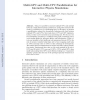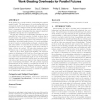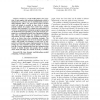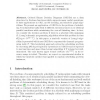96 search results - page 2 / 20 » Executing task graphs using work-stealing |
EUROPAR
2010
Springer
13 years 5 months ago
2010
Springer
Today, it is possible to associate multiple CPUs and multiple GPUs in a single shared memory architecture. Using these resources efficiently in a seamless way is a challenging issu...
SPAA
2009
ACM
14 years 5 months ago
2009
ACM
Work stealing is a popular method of scheduling fine-grained parallel tasks. The performance of work stealing has been extensively studied, both theoretically and empirically, but...
IPPS
2010
IEEE
13 years 2 months ago
2010
IEEE
Abstract--NABBIT is a work-stealing library for execution of task graphs with arbitrary dependencies which is implemented as a library for the multithreaded programming language Ci...
ICPP
1999
IEEE
13 years 9 months ago
1999
IEEE
Task graph scheduling has been found effective in performance prediction and optimization of parallel applications. A number of static scheduling algorithms have been proposed for...
WEA
2005
Springer
13 years 10 months ago
2005
Springer
Ordered Binary Decision Diagrams (OBDDs) are a data structure for Boolean functions which supports many useful operations. It finds applications in CAD, model checking, and symbol...




